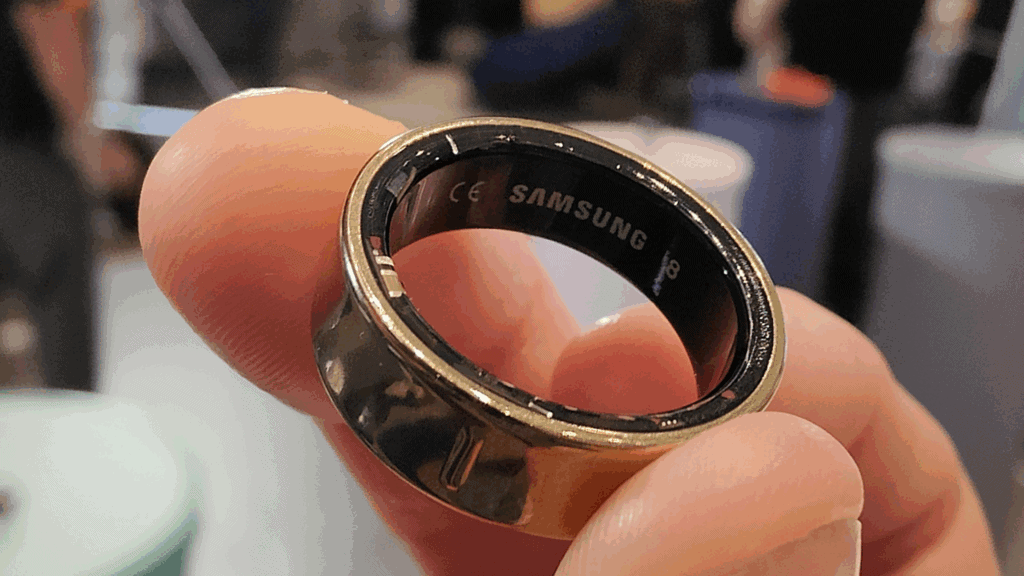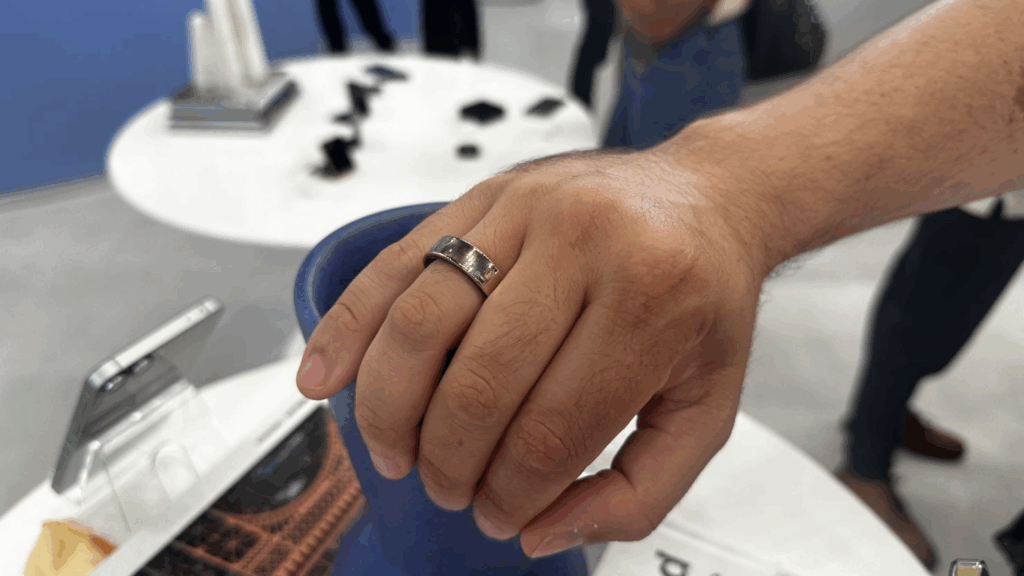The Samsung Galaxy Ring has generated plenty of buzz since its debut. Marketed as a sleek, cutting-edge smart ring for health tracking and lifestyle optimization, it taps into a growing demand for wearables that are discreet, stylish, and data-rich. Samsung, a tech titan known for high-end smartphones and smartwatches, has positioned the Galaxy Ring as a premium health accessory, boasting features like sleep tracking, heart rate monitoring, and a long-lasting battery. On paper, it sounds like the ideal alternative to bulkier wrist-worn trackers.
But when the hype clears and real-world usage sets in, a less glamorous picture starts to emerge.
This post dives deep into the many shortcomings of the Samsung Galaxy Ring, with clear, detailed explanations of each. If you’re considering buying one, or just curious about whether the product lives up to its promise, this breakdown is essential reading.
Table of Contents
- 1 Design and Durability Concerns
- 2 Battery Life and Charging Weaknesses
- 3 Weak Sensor Lineup and Tracking Limitations
- 4 A Basic and Limiting App Experience
- 5 Lack of Real-Time Interaction and Smart Features
- 6 Compatibility Headaches and Value for Money
- 7 Practicality Gaps for Active Lifestyles
- 8 Final Verdict
Design and Durability Concerns
At first glance, the Galaxy Ring’s titanium build suggests durability and luxury. But in practice, it doesn’t fully hold up. Titanium might be strong, but it’s also prone to visible scratching, especially if you’re grabbing gym bars, weights, or metal handles in your day-to-day. The surface can lose color or show signs of wear faster than you’d expect from a product in this price range.
Then there’s the thickness. The Galaxy Ring is noticeably chunky. While some users may not mind, others, especially those with smaller hands or women with slimmer fingers, may find it awkward, obtrusive, or even aesthetic mismatch. And since there are no options to customize thickness or width, you’re stuck with what Samsung thinks fits most people. Spoiler: it doesn’t.
Comfort is a mixed bag. While the ring is generally wearable, the internal protrusions that help position sensors can dig into your finger at times. Simple tasks like washing your face or adjusting clothes may become unexpectedly uncomfortable, the ring can scratch your skin or snag on fabrics.
Battery Life and Charging Weaknesses

Samsung advertises a battery life of up to 7 days, which sounds good, until you understand how it’s achieved. The long battery life is due in part to restrictions on features, such as SpO2 monitoring being locked to sleep periods only. Want to check your blood oxygen level while awake? You can’t.
Even more disappointing is the charging case. It only provides 1 to 1.5 charges on the go, compared to RingConn’s case that offers 10 full recharges. If you’re traveling or off-grid, you’ll run out of power fast unless you bring cables and a plug.
Wireless charging? That’s another area of confusion. Some sources claim the case supports it; others say it doesn’t. That kind of ambiguity isn’t acceptable for a premium device. Consumers deserve clarity, not contradictions.
Weak Sensor Lineup and Tracking Limitations
The Galaxy Ring is surprisingly limited in terms of hardware sensors. It includes just three: a heart rate sensor, an accelerometer, and an infrared temperature sensor. That’s far less than Samsung’s own Galaxy Watch 7, which also includes a barometer, BIA sensor, and ECG. The Ring has none of these.
The absence of a barometer means it can’t track elevation, stairs, hill climbs, or floor count, which cuts into its usefulness as a fitness tracker. There’s also no GPS, so if you want to log your route during a run or walk, you must carry your phone. Want to leave your phone behind? Tough luck.
One of the most criticized features is the SpO2 sensor, which only works while you’re asleep. You can’t get a reading during the day or manually trigger a test. Similarly, skin temperature tracking is passive, no on-demand checks here either.
Step tracking has been called chaotic. The ring can either overestimate your steps when you’re not moving (due to hand gestures) or undercount them during actual walking. That’s because it uses hand motion-based algorithms, which don’t match the accuracy of foot-based step detection.
And then there’s the calorie tracking, which is oddly flatlined, many users report suspiciously consistent daily burn estimates around 2,000 calories, even on active days. Sleep tracking isn’t much better. It often over-reports how long you’re awake and misses wake-up periods entirely. In some cases, loose-fitting rings cause gaps in sleep data.
As a final nail in the sensor coffin: ECG, body composition, and automatic detection for most workouts are missing. Unless you’re walking or running, don’t expect your exercise to be picked up.
A Basic and Limiting App Experience

Samsung Health, the app required to view data from the Galaxy Ring, feels like an afterthought compared to competitors. It lacks depth, polish, and advanced analysis. Want to compare metrics across days? Can’t. Looking for detailed sleep insights? They’re surface-level and vague.
The stress tracking offers only a vague color gradient with no numerical value. That’s hardly helpful for understanding trends or cause-effect relationships. And it doesn’t show heart rate variability (HRV), a standard feature in most modern health apps, including free ones.
Other platforms, like Aura, go far beyond Samsung Health. Aura includes educational insights, detailed trend tracking, and even integrates with over 600 partners, from Headspace to Equinox. Samsung’s system, by comparison, feels isolated and unfinished.
AI-generated insights, like the so-called Energy Score, often miss the mark. Users reported receiving “high energy” notifications on days when they felt exhausted, and vice versa. The activity goals don’t adapt, there’s no option to take rest days, and you can’t opt out of the scoring system if it doesn’t fit your lifestyle.
Lack of Real-Time Interaction and Smart Features
For a wearable in the $350–$400 range, the Galaxy Ring lacks essential smart features. There’s no vibration or sound for alarms or notifications. You won’t know when your phone rings. You can’t receive alerts. There’s no microphone, no speaker.
It doesn’t stop there. Want to use the ring to find your phone? You can’t. Want to listen to music or podcasts directly from the ring? Impossible. There’s no storage or Bluetooth audio support.
Pinch gestures, a headline feature used to control your phone or take selfies, work only on new Galaxy foldables with the latest OS. If you have a different Galaxy model (even the flagship S24 Ultra), you’re out of luck.
The ring can’t start a workout on its own, again, you’ll need to pull out your phone. There’s no interface or display, so you can’t monitor your heart rate or adjust your tracking mid-run. Real-time interaction is essentially nonexistent.
Compatibility Headaches and Value for Money

Let’s talk price. The Galaxy Ring is not cheap. At £350 ($400+ in some markets), it’s more expensive than Samsung’s own Galaxy Watch 7, which offers way more features, including a display, GPS, BIA, barometer, ECG, and workout detection.
And for that steep price, compatibility is limited. The ring only works with Android phones. Some reviews say only Samsung phones are supported for full functionality, but others say it’s Android-wide. The fact that this is unclear is a problem in itself. What’s confirmed is that iOS users are completely left out.
In contrast, competitors like RingConn and Ultrahuman Air work with both Android and iOS. They also charge less, offer multiple recharges via their cases, and come subscription-free.
Samsung Health is free for now, but there’s chatter that some advanced features may be locked behind future subscriptions. With the competition offering equally robust services without paywalls, this feels risky.
Practicality Gaps for Active Lifestyles

The Galaxy Ring’s form factor presents challenges for anyone who lives an active life. Activities that require gripping, like weightlifting, climbing, or golf, are frustrating with a ring on your finger. Not only can it interfere, but it can also scratch, chip, or dig into your skin.
Serious athletes or hobbyists often remove the ring for safety or comfort, which creates data gaps in what’s supposed to be an “always-on” tracker. So much for all-day wearability.
And with no screen, no real-time feedback, and no workout-specific features beyond basic tracking, it’s simply not a serious training tool. It’s more of a passive data logger, useful if you’re only mildly curious about your health, but inadequate if you want actionable insight while training.
Final Verdict
The Samsung Galaxy Ring is an ambitious product, one that tries to blend elegant design with intelligent health tracking. But ambition doesn’t equal execution. For all its promise, the Galaxy Ring feels like a half-finished idea: an expensive accessory with more limitations than strengths.
Yes, it looks good. Yes, it’s discreet. But beneath the surface, it lacks the sensors, features, flexibility, and reliability to justify its premium price. And the alternatives, cheaper, cross-platform smart rings with more thoughtful features, only make its weaknesses more glaring.
Unless you’re a die-hard Samsung user with a specific interest in passive health tracking and aesthetics over utility, it’s hard to recommend the Galaxy Ring. For everyone else, better value and function exist elsewhere.
Nevertheless, if you’ve weighed all these drawbacks. Still wish to go with the purchase, congratulations! You’re making a considered decision that you won’t regret.
Reference:
https://www.youtube.com/watch?v=tYUC_Ni3lb4&pp=ygUTU2Ftc3VuZyBHYWxheHkgUmluZw%3D%3D
https://www.youtube.com/watch?v=t9AFfQnV88w&pp=ygUTU2Ftc3VuZyBHYWxheHkgUmluZw%3D%3D
https://www.youtube.com/watch?v=p3Pv-uMKutk&pp=ygUTU2Ftc3VuZyBHYWxheHkgUmluZw%3D%3D
https://www.youtube.com/watch?v=BKhD0PKll-s&pp=ygUTU2Ftc3VuZyBHYWxheHkgUmluZw%3D%3D
https://www.youtube.com/watch?v=EiSUQ_ccDjI&pp=ygUTU2Ftc3VuZyBHYWxheHkgUmluZw%3D%3D
https://www.youtube.com/watch?v=AbxM4mG82dw&pp=ygUTU2Ftc3VuZyBHYWxheHkgUmluZ9IHCQmyCQGHKiGM7w%3D%3D
Samsung Galaxy Ring

The Samsung Galaxy Ring has generated plenty of buzz since its debut. Marketed as a sleek, cutting-edge smart ring for health tracking and lifestyle optimization, it taps into a growing demand for wearables that are discreet, stylish, and data-rich. Samsung, a tech titan known for high-end smartphones and smartwatches, has positioned the Galaxy Ring as a premium health accessory, boasting features like sleep tracking, heart rate monitoring, and a long-lasting battery. On paper, it sounds like the ideal alternative to bulkier wrist-worn trackers.
Product Currency: USD
Product Price: 400
Product In-Stock: InStock
3.5


